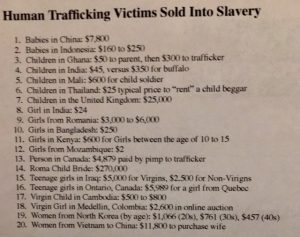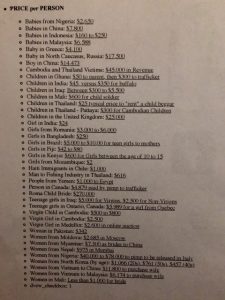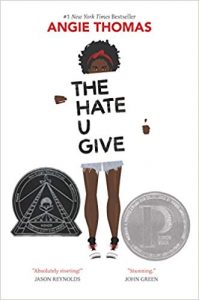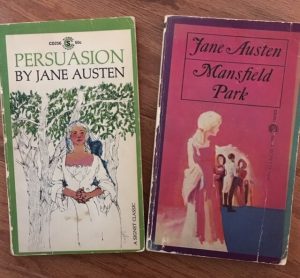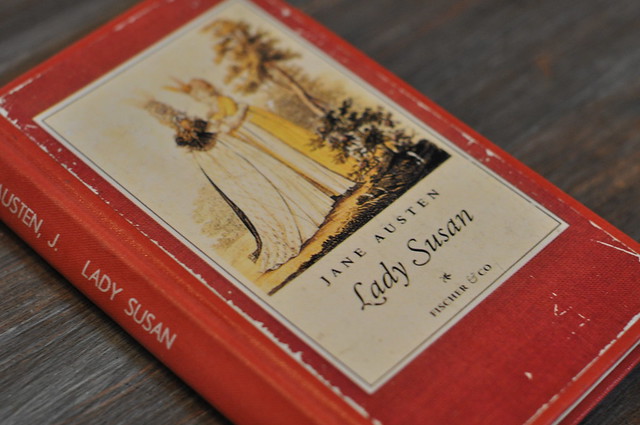I love word origins—so of course I had to check out a word that has nothing to do with baby goats or sleeping toddlers.
“Kid” meaning “child” first appeared in the 16th century, but only became popular in the 19th century.
The “nap” in kidnap has nothing to do with sleep. The “kidnap” kind of “nap” is an obscure and now nearly obsolete English word meaning “to seize or steal,” possibly related to the verb “to nab” (as in “Police nab bank robbers”).
According to The Word Detective online:
“…when ‘kidnap’ first appeared in England in the late 1600s, it not only meant ‘to steal and carry off children,’ but very specifically to snatch children and other young people in order to ship them off to the colonies in North America or the Caribbean to serve as servants or laborers. . . . The word ‘kidnap’ itself is thought to be a grisly souvenir of this practice, invented by the criminals who actually stole children from the slums of England to sell into servitude half a world away.”
Abduction vs Kidnapping
According to Merriam-Webster, the current Legal Definition of kidnapping is: an act or instance of the crime of seizing, confining, inveigling, abducting, or carrying away a person by force or fraud often with a demand for ransom or in furtherance of another crime.
Although this definition includes abduction, some make a distinction between abduction and kidnapping. For these people, abduction is defined as using deceit or force to take a person (child or adult) away from home or relatives. The victim typically knows the abductor. Abductions are especially likely during separations, divorces, and custody battles. Estimates are that family members abduct 1,230 children each year. Kidnapping usually involves demanding money from the employer, government, family, or victim in order for the victim to be set free. The kidnapper could be anyone, known or unknown, professional or amateur.
Common Kidnap and Ransom Scenarios
According to Universal Safety & Security Solutions (USSS), kidnapping for ransom is an epidemic on a global scale, and escalating. They report estimates of 15,000 to 20,000 incidents each year, with fewer than 20% of these incidents being reported. Common targets include high net worth people, those who work for large companies in the public domain, or companies with an unpopular product or reputation. USSS identifies six common kidnap and ransom scenarios.
1—Express Kidnapping. Someone gets into a taxi, the driver takes the victim a few blocks away and picks up the kidnapers. They force the victim to several different ATM or banking locations and force him/her to withdraw the maximum allowable. Victims are held until the kidnappers believe they have all the funds available. Sometimes the victim is released unharmed; more often they are robbed and assaulted; some are held longer if the kidnappers believe they can get more money from family or an employer.
2—High Net Worth Individual Kidnapping. These are carried out by experienced or professional gangs. They are strategically planned, requiring surveillance and intelligence gathering to determine habits, security measures, and prime opportunities. The perpetrators demand ransom from the family or company. After the ransom is paid, the captive is typically released.
3—Tiger Kidnapping. It’s strategically planned over time. The victim (or sometimes an object) is taken as leverage to force a third party target to commit an illegal act on behalf of the kidnappers (or their employers). These are rarely reported because the target has also committed a criminal act.
4—Political/Terrorist Kidnapping. Terrorist organizations target expatriates, national natives, westerners, oil and gas workers, non-governmental mid-level managers, workers, and journalists.These kidnappings make political statements, force political concessions, force the release of political prisoners, and/or fund their organizations. Many involve military entities.
5—Virtual Kidnapping. This isn’t an actual abduction or kidnapping. It’s a scam that turns panic, fear, and urgency into revenue. The perpetrators could be individuals or groups. They call the target, say that a child or loved one has been kidnapped, demand immediate payment. They use scare tactics, such as someone screaming in the background. The goal is to get payment before the victims can learn that their loved one isn’t actually being held. The average payment for a virtual kidnapping was $1000 to $3000.
6—Unlawful Detention. There is no ransom demand. It covers a variety of issues, including child custody, illegal imprisonment, prostitution, slave labor, sexual predation, and forced marriages.
Political/Terrorist Kidnapping
Political/terrorist kidnapping is extremely important worldwide. As best I could determine, the Taliban and Al Qaeda groups have been preeminent in this area, making hundreds of millions of dollars kidnapping hostages and releasing them for a ransom payment. Indeed, the United Nations Security Council urged countries not to pay ransom in order to cut off this source of funding for Al Qaeda. Nevertheless, the perpetrators aren’t always terrorist groups. According o a report by researchers at Tilburg University in the Netherlands, thousands of children were kidnapped and held for ransom by senior Eritrea military officers. In Eritrea, all students must serve at a military camp in order to graduate high school. The officers kidnapped students, called their victims’ families, and demanded a ransom of $7,500 to release the victim. If not paid, the military sold the children to Bedouin traffickers.
The top 5 countries for kidnapping for ransom
- Mexico
- India
- Nigeria
- Pakistan
- Venezuela
35% of all global kidnappings reported were in the Asia Pacific region. You can get specifics by country online.
Statistics on kidnapping in the United States are difficult to pin down because it isn’t separately recorded in the Uniform Crime Report. One can only assume that motivation and tactics are in line with those outlined above. Unlike the five countries listed above, official U.S. policy is to NOT pay ransom.
The Business of Kidnapping
Anja Shortland, a Reader in Political Economics at King’s College, London, is prominent in discussing kidnapping as business. She points out that most kidnappings happen in countries with weak governments and disputed territories. But regardless of venue, what is the right price for a loved one’s life? Shortland’s position is that it’s a negotiation like any other.
- The kidnappers want the maximum payout. If the first demand is agreed to, they will revise the demand upward, assuming the family, company, or government can do better—and will continue to up the ante. Therefore, never agree immediately to a kidnapper’s demands.
- Also, a generous payout makes other members of the family or company or fellow nationals vulnerable to being targeted. It’s morally responsible to try to limit payments.
- If the kidnappers agree to the first ransom offer they are given, they’re probably amateurs and already desperate to return the hostage.They might let it go with a couple of ATM passes.
Three factors make the “business deal” of kidnapping for ransom especially difficult to close.
- Kidnappers and payers distrust each other. One-time transactions increase the likelihood of cheating.
- Agreeing to a ransom is difficult, for the reasons outlined above.
- Swapping the ransom for the hostage is usually complicated: police intervention, rival gangs or other thieves, leaving a potential witness.
Last But Not Least:
Kidnapping Oneself
Yep, it happens—and there are two general types.
Police have discovered many “fake” cases of kidnapping for ransom in which people hide themselves for some time because of (1) business problems or (2) family disputes or (3) to extort money from their own families. Some 18 fake cases were reported in Lahore alone last year.
And then there are thrill-seekers who get themselves kidnapped for the excitement of the experience. Several companies that provide such a service advertise online, offering a chance to “feel the rush, the thrill and the fear of a real kidnapping; feel and understand the psychological shock of victims; and grow the reality of kidnapping as you wish by integrating into a larger-than-life scenario.”
BOTTOM LINE FOR WRITERS











